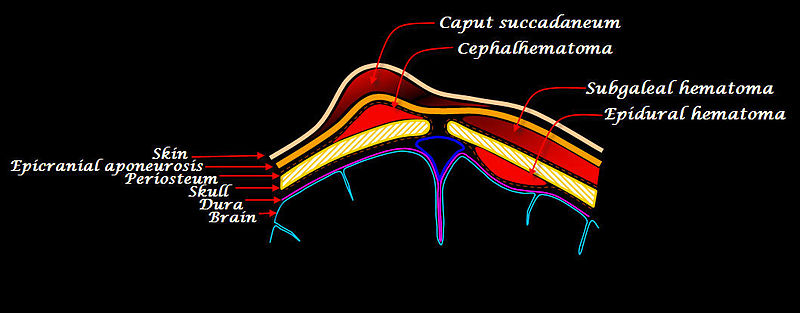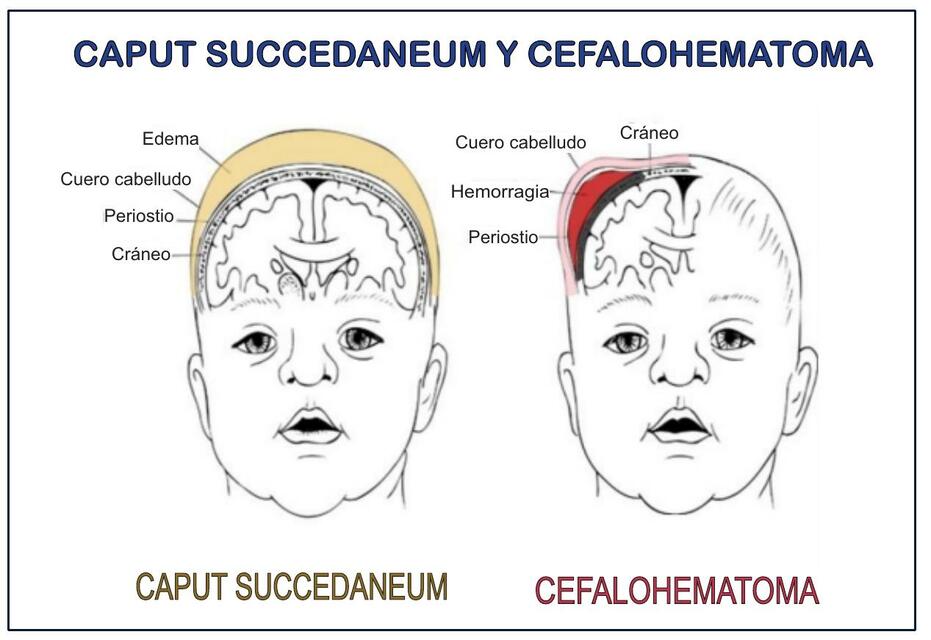Caput succedaneum is a swelling of the scalp that occurs in newborns. It is caused by the buildup of fluid between the scalp and the skull. Caput succedaneum is a common condition, affecting about 1 in 3 newborns. It is most likely to occur in babies who are born vaginally, especially if the delivery is prolonged or if forceps or vacuum are used.
Causes
The most common cause of caput succedaneum is pressure from the birth canal during delivery. When the baby’s head passes through the birth canal, it can stretch the scalp and blood vessels. This can cause fluid to leak out of the blood vessels and collect under the scalp.
Other factors that can increase the risk of caput succedaneum include:
- A large baby
- A long or difficult delivery
- The use of forceps or vacuum during delivery
- Premature birth
- Low birth weight
Symptoms
Caput succedaneum typically appears shortly after birth. The swelling is usually soft and squishy, and it can vary in size from a small lump to a large, cone-shaped head. The swelling may be red or bruised, and it may cross the midline of the head.
In most cases, caput succedaneum does not cause any pain or discomfort to the baby. However, in some cases, the swelling can be severe enough to cause the baby’s head to be misshapen.
Diagnosis
Caput succedaneum is usually diagnosed by a doctor or midwife shortly after birth. The doctor will examine the baby’s head and look for signs of swelling, bruising, or misshapenness.
Treatment
In most cases, caput succedaneum does not require any treatment. The swelling will usually go away on its own within a few days. In the meantime, the doctor may recommend that the baby be kept warm and comfortable.
In rare cases, the swelling may be severe enough to require medical treatment. This may involve draining the fluid from under the scalp. The fluid can be drained by needle aspiration or by surgery.
Complications
Caput succedaneum is a harmless condition that usually goes away on its own. However, in rare cases, it can lead to complications such as:
- Jaundice: Caput succedaneum can cause bruising, which can lead to jaundice. Jaundice is a yellowing of the skin and whites of the eyes. It is usually harmless, but it can be serious in some cases.
- Infection: The swelling of caput succedaneum can create a pocket where bacteria can grow. This can lead to an infection.
- Cephalohematoma: Caput succedaneum can sometimes be mistaken for cephalohematoma, which is a collection of blood between the skull and the scalp. Cephalohematoma is a more serious condition that requires medical treatment.
Outlook
In most cases, caput succedaneum goes away on its own within a few days. The swelling may take up to two weeks to completely disappear. In rare cases, the swelling may last longer.
If you are concerned about your baby’s caput succedaneum, talk to your doctor. They can help you understand the condition and answer any questions you have.





